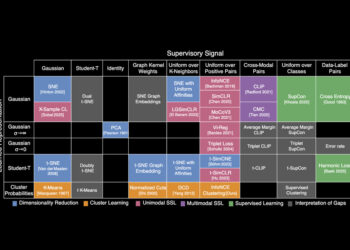Analysing global ticketing data helps identify new flight routes and airline partnerships.
As the gateway between the East and the West, Dubai Airports is the world’s busiest airport in terms of international passenger volume. Operating 24 hours a day, seven days a week, the airport – which includes both Dubai International (DXB) and Dubai World Central (DWC) airports – serves millions of customers each year. Ensuring clockwork precision of flights and operations for passengers and airlines is crucial to Dubai Airports’ success and growth.
Here, Mohammed Farhaz, Senior Manager of Aviation Business Analytics, shares how Tableau has helped the company identify profitable new revenue streams, maintain clockwork airport operations and manage the impact of COVID-19 as effectively as possible.
What role does data and analytics play at Dubai Airports?
Today’s airport operations involve many different systems and services all working together. The more harmoniously they do this, the better the overall customer experience will be. Data and analytics play a central role in helping us understand and refine every aspect of these systems, from check-in queue times and shop locations to punctuality of flight arrivals and departures. It also helps us track evolving trends in the commercial aviation industry and identify new routes or destinations that customers would like served from our airports, enabling us to expand our network footprint and service offering.
What data challenges were you facing before Tableau?
Before Tableau, a majority of our data processes lacked the potential to be automated, which meant we spent a significant amount of time repeating the same tasks on a daily, weekly, or monthly basis. For instance, to provide senior management with the latest traffic data from around the airport, we had to manually input this information into Excel and rebuild the same report every week. It was also sometimes challenging to spot important insights buried within spreadsheets of flight/traffic data, meaning potential opportunities to improve our operations were being overlooked or missed altogether.
We can easily explore the data on a global heatmap to see the latest trends. This approach gives us the evidence we need to create compelling airline proposals in a matter of hours, when previously it would take days of manual analytics work.
How has migrating to Tableau solved these challenges?
Now, most of these old manual processes have been completely automated, saving hundreds of man-hours a month. Data is staged in SQL server databases, prepped in Alteryx, and then connected directly to Tableau, where it can be refreshed at the click of a button. Once a new dashboard is built, it never needs to be manually updated or maintained again. Employees can access it whenever they want, making them self-reliant and enabling them to correctly answer their own questions and analytics needs for the first time. We have over 13 different teams using Tableau in this way, including Finance, Capacity Planning, Operations, Engineering Services, Investment Planning, and more.
Tableau’s emphasis on visual analytics – particularly mapping – also makes key trends and patterns in the data significantly easier to see, such as new flight destinations that are quickly growing in popularity. Having that visual sense of markets makes complex analytics much easier to understand. Tableau is designed to make the most of geographical data, so you can get to the “where” as well as the “why.” Out-of-the-box geocoding and rich interactive maps make geospatial analysis available to everyone, without the need for specialized software.
How are you using Tableau to drive new revenue streams?
The core objective of the Business Development team is to bring new airlines and activity into the airport. Doing so requires building an effective business case that demonstrates passenger needs are going unmet. For example, we identified significant traffic flows of passengers who were flying indirectly to Dubai via other hubs. This insight helped us find and create new market opportunities for passengers who were previously unserved.
Finding these insights used to take a huge amount of number crunching, but now we can explore the data via an automated Tableau dashboard, which is updated with ticketing information from the International Air Transport Association (IATA) database every month. We can easily explore the data on a global heatmap to see the latest trends. This approach gives us the evidence we need to create compelling airline proposals in a matter of hours when previously it would take days of manual analytics work.
How is Tableau helping improve day-to-day business operations?
Our airports operate 24 hours a day, seven days a week, whereas many others have a certain offline or curfew period. As such, our scheduling needs to run smoothly round the clock. One of the biggest threats to this is bad weather, which can quickly cause major disruption. Fortunately, we can use Tableau to mitigate the worst effects. When the meteorology department issues a weather warning, we analyze our planned schedule for the affected period and identify airlines operating multiple flights to/from the same destination within this window. We then work with these airlines to proactively reschedule or cancel flights and consolidate the demand with fewer flights to minimize the impact of such disruption whilst maintaining connectivity and customer service standards.
How are you using analytics to meet the industry challenges caused by COVID-19?
The last six months have been very challenging for the whole aviation industry, with travel and tourism hit particularly hard. Like many others, we’ve focused on managing expenses as efficiently as possible, closing facilities where necessary to make OPEX savings and keep costs as low as possible. Tableau is helping us to closely monitor the market recovery and inform key decisions regarding the reopening of facilities as and when passenger confidence returns.













